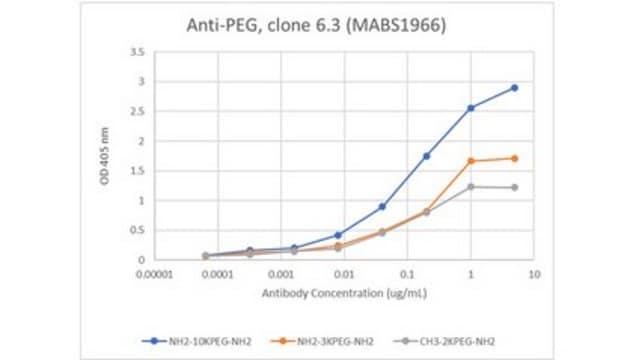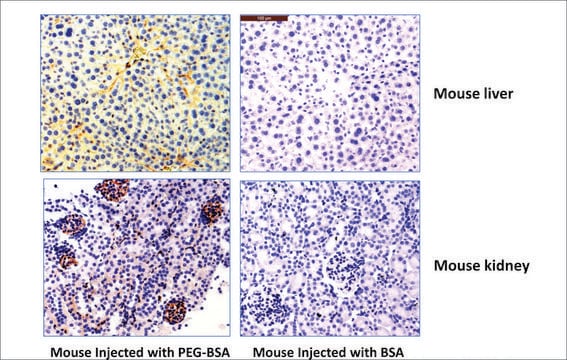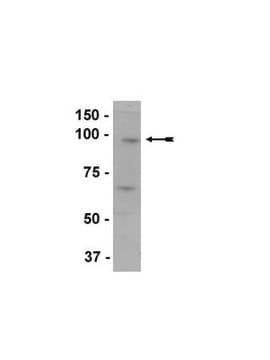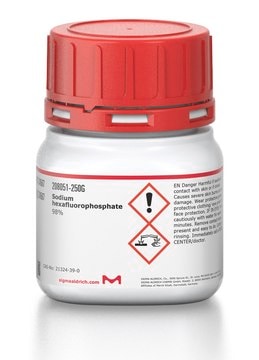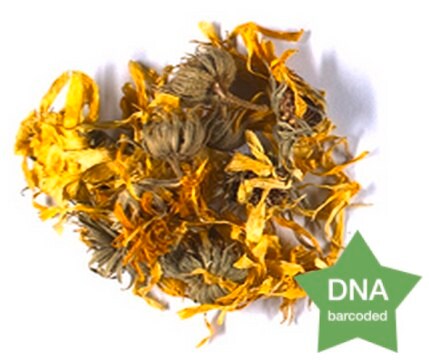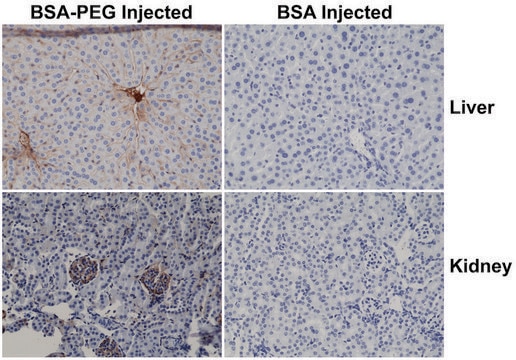MABS1214
Anti-PEG (methoxy group) Antibody, clone RM105
clone RM105, from rabbit, purified by affinity chromatography
Synonim(y):
PEG, pegylation, methoxy group, Polyethylene glycol, polyethylene oxide, PEO, polyoxyethylene, POE
About This Item
Polecane produkty
pochodzenie biologiczne
rabbit
Poziom jakości
forma przeciwciała
purified immunoglobulin
rodzaj przeciwciała
primary antibodies
klon
RM105, monoclonal
oczyszczone przez
affinity chromatography
reaktywność gatunkowa (przewidywana na podstawie homologii)
all
metody
ELISA: suitable
immunohistochemistry: suitable
western blot: suitable
izotyp
IgG
Warunki transportu
wet ice
docelowa modyfikacja potranslacyjna
unmodified
Opis ogólny
Immunogen
Zastosowanie
ELISA Analysis: Multiple concentrations of this antibody was used to detect three different BSA-PEG conjugates (5K, 40K and 40K branched)
Signaling
Epitope Tags
Jakość
Western Blotting Analysis: A 1:1;000 dilution of this antibody detected PEG (methoxy group) on conjugated recombinant BSA
Opis wartości docelowych
Postać fizyczna
Przechowywanie i stabilność
Inne uwagi
Oświadczenie o zrzeczeniu się odpowiedzialności
Not finding the right product?
Try our Narzędzie selektora produktów.
Kod klasy składowania
12 - Non Combustible Liquids
Klasa zagrożenia wodnego (WGK)
WGK 2
Temperatura zapłonu (°F)
Not applicable
Temperatura zapłonu (°C)
Not applicable
Certyfikaty analizy (CoA)
Poszukaj Certyfikaty analizy (CoA), wpisując numer partii/serii produktów. Numery serii i partii można znaleźć na etykiecie produktu po słowach „seria” lub „partia”.
Masz już ten produkt?
Dokumenty związane z niedawno zakupionymi produktami zostały zamieszczone w Bibliotece dokumentów.
Nasz zespół naukowców ma doświadczenie we wszystkich obszarach badań, w tym w naukach przyrodniczych, materiałoznawstwie, syntezie chemicznej, chromatografii, analityce i wielu innych dziedzinach.
Skontaktuj się z zespołem ds. pomocy technicznej